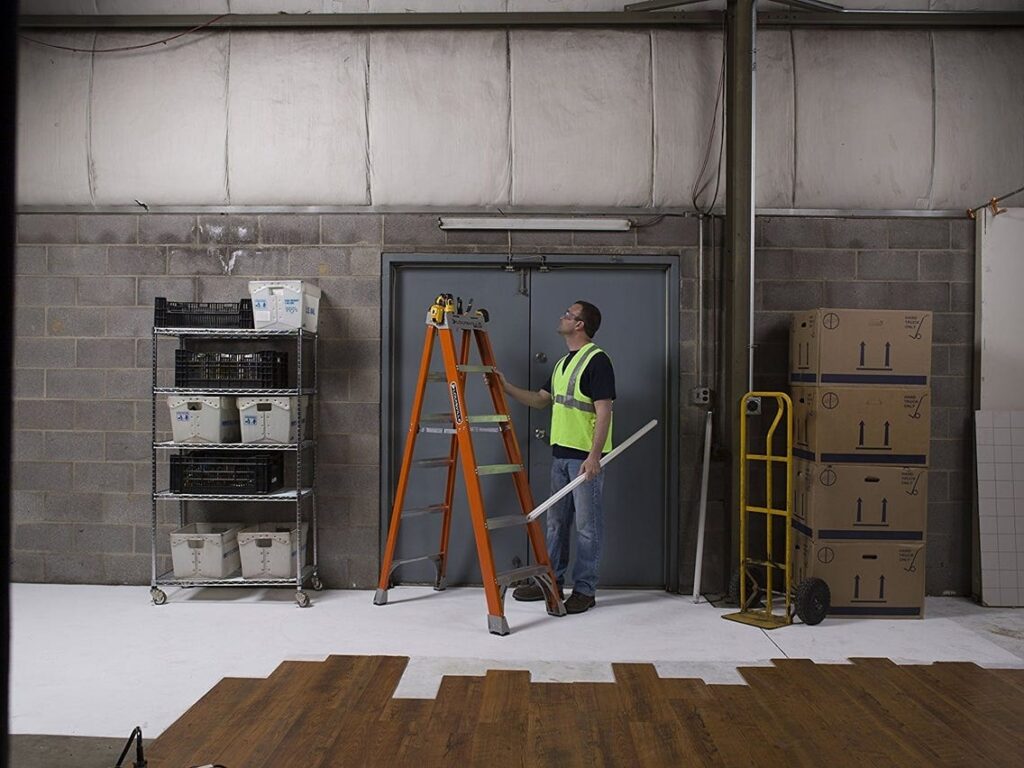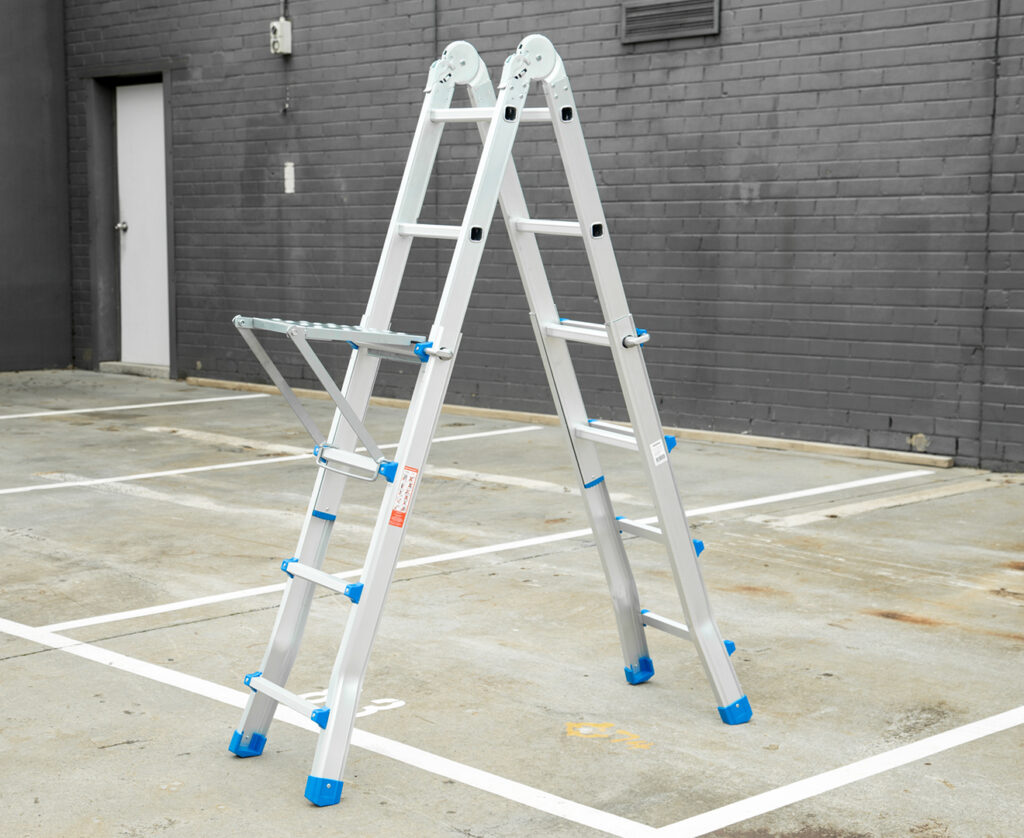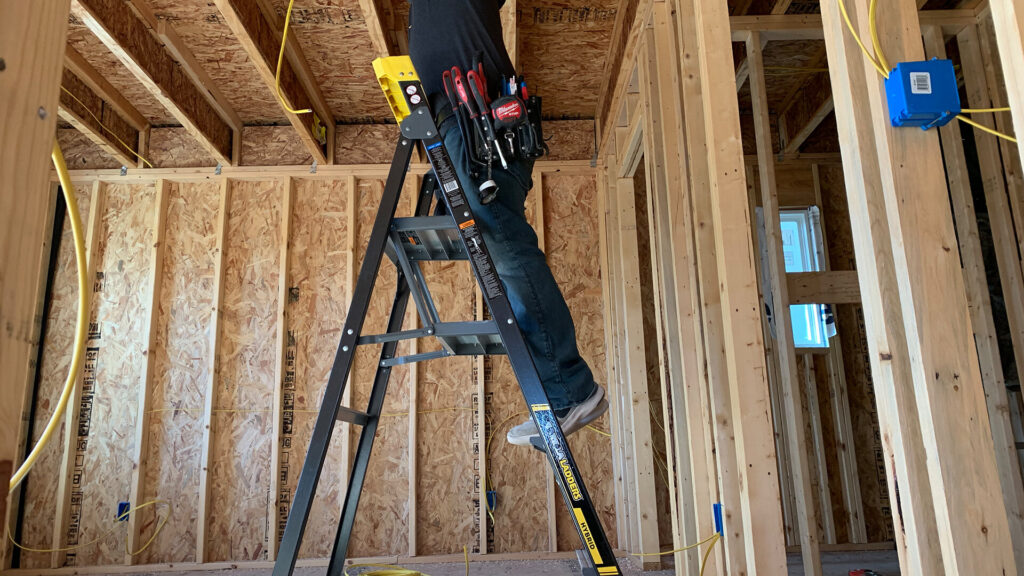Step Stools and Ladders: Reach New Heights with Ease
The employees are the most important part of every successful company. If they are happy, their productivity will increase and help your business grow. The key to continuity in productiveness and efficiency is in keeping your facility in perfect order and the working environment healthy and safe.
Using manual labour may lead to injuries and fatalities of workers, so that’s why you have to meet all the safety requirements and create adequate working conditions. And some of the most essential items you’ll need are height-assisting devices such as step ladders and stools to safely access hard-to-reach items.
The Need for Step Stools and Ladders for Easy Work Flow
Step ladders and step stools are very similar in their design, general appearance and construction, however, there are a few subtle differences between the two. A step ladder is a self-supporting ladder, in the shape of an inverted V when its two halves are pulled apart at an angle with treads or steps.
A step stool, on the other hand, is smaller and lighter and most step stools take the shape of an inverted V with hinges connecting their foldable sections. Some of them have additional steps to ensure easier climbing.
The ladder is often taller than the stool and features more steps, which makes it a good choice for outdoor use as well. It’s ideal for accessing higher areas, while the stool is mostly preferred for indoor use, to reach shelves and cabinets. You can choose from a variety of step stools and ladders and find what suits the needs of your facility the most.
The step ladders are built to perform more rigorous jobs, therefore, they are stronger and have higher quality construction to accommodate higher impact. They have a higher duty rating and are suitable for industrial and commercial purposes, while the stools are designed for lighter tasks and work best in indoor spaces.
The overall lightweight construction of step ladders and stools offered in various height capacities provides optimum portability between sites and they essential in almost any working environment. They are ideal for use in warehouses, construction sites and retail stores as their self-supporting design makes them a convenient choice and can help preserve the employees’ safety. Step ladders and stool are an effective and ergonomic solution to industrial access tasks and can be found in a variety of sizes, load capacity and material types.
Step Ladders and Stool Materials
The material a ladder or stool is made of can play a big role in a few aspects of your decision to buy it including cost and use, so think about the types of projects where having them is essential or handy.
Aluminium
Aluminium is an excellent material for step ladders and stools because it’s strong and can stay intact after a lot of use. More importantly, it’s lightweight, which makes it easy for you to haul one back and forth. But keep in mind that it’s a metal and it can conduct electricity. If you’re working near electrical equipment or wires, an aluminium ladder or stool is not the right choice for you.
Fibreglass
Fibreglass is strong and can take rough handling and it doesn’t conduct electricity like aluminium. It’s a durable material and a good solution for working outdoors.
Plastic
Plastic stools are some of the most suitable options for different facilities.
Steel
Steel ladders are a practical solution as they are resilient and can handle heavy loads, but keep in mind that they are heavy. Also, proper storage is required to prevent a steel ladder from rusting.
Use Step Stools and Ladders Carefully
Lastly, note that step stools and ladders can be a very handy tool or a dangerous tool, all depending on how you use them. If used and stored properly, they will be some of the most helpful devices in your facility.
Before using the ladder or the stool make sure you take all the safety precautions. One of the most important things to do is to check the ladder or the stool before its use for any damage, wear and tear, corrosion or other indicators of poor condition.
Then, ensure the ground is level and all the four rails are securely supported. Use them only if the two halves are fully spread out and then locked to maximise stability and prevent snapping. Also, make sure the ladder or the stool is located at least four metres away from any power lines. When using a ladder, always try to keep three points of contact with it and wear a tool belt if needed when carrying tools up the ladder.
Also, it’s important that the user never stretches himself beyond reach while on the ladder or the stool nor mount the ladder from the side or step from it to another. This can lead to a shift of balance and lead to injuries caused by falling, or death, in the worst-case scenario.
Wear non-slip footwear and if you temporarily leave the ladder or the stool during operation, make sure to recheck every time. When you’re done with the task, perform a final check consisting of cleaning if needed, then check for loos and damaged parts and finally, store the ladder or the stool in a proper location.



